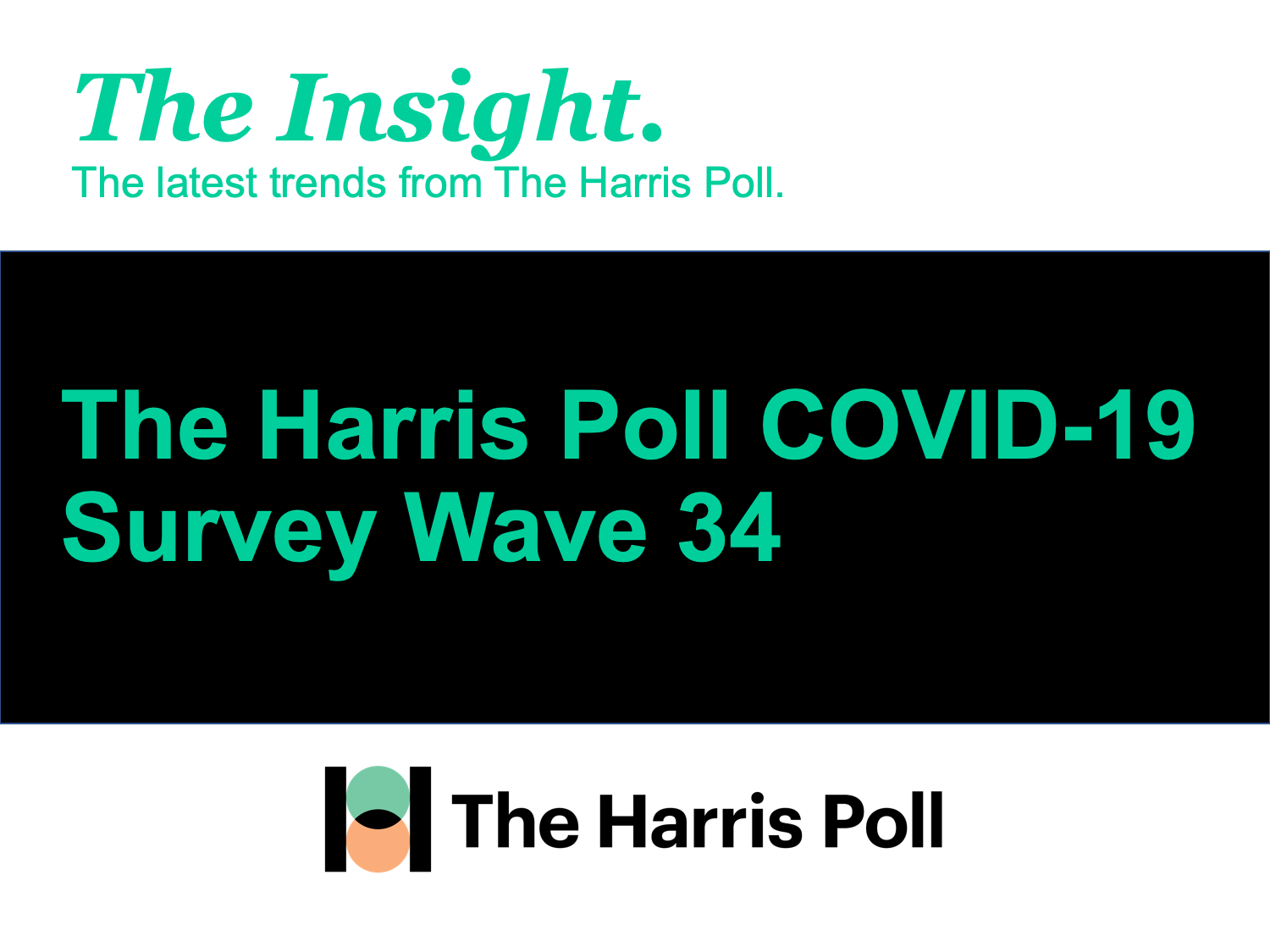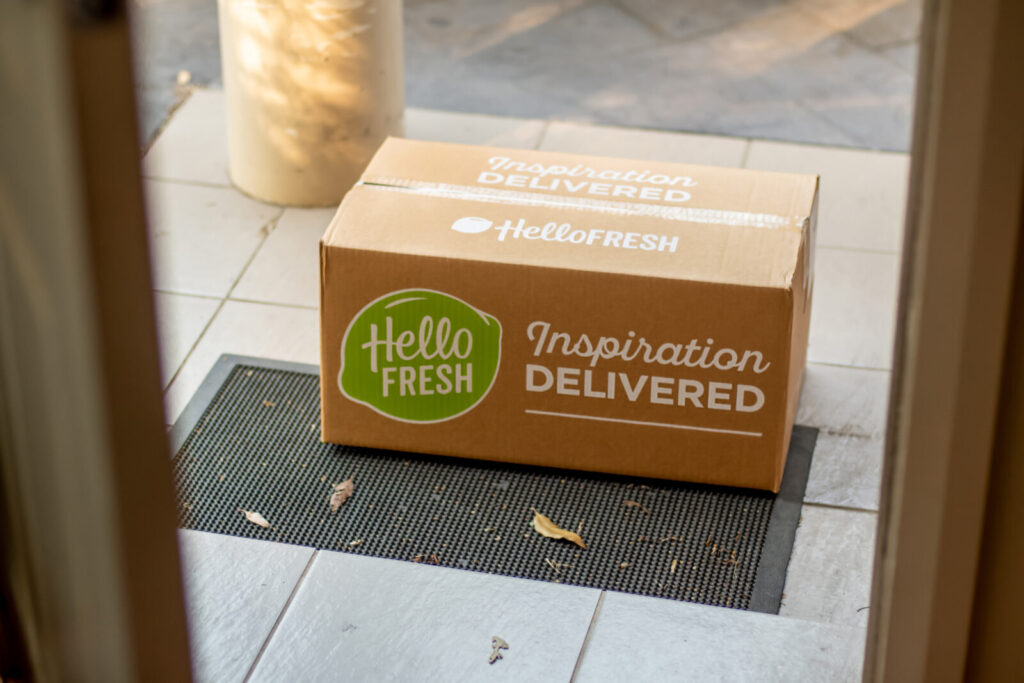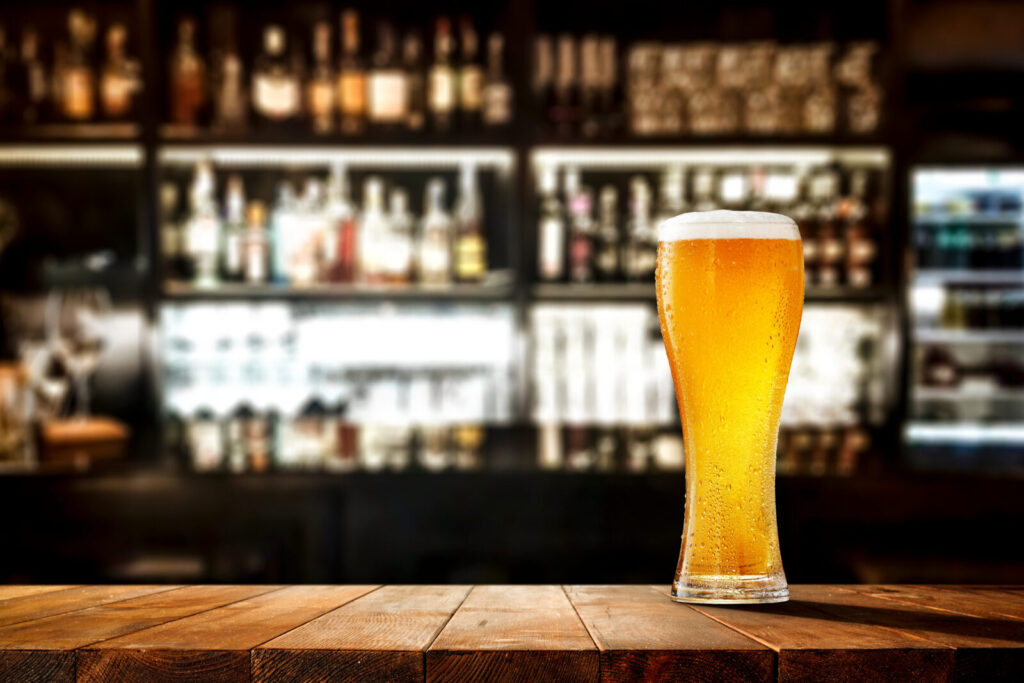Brief • 4 min Read

In The Harris Poll COVID-19 Tracker (Week 34) fielded October 15th – 17th, 2020, we explore what Americans’ renewed appreciation of the outdoors can mean for marketers, consumers take on Amazon Prime Day and signals for holiday shopping, a progress report from parents on schools amid the pandemic, whether or not Election Day should be a holiday and lastly Americans’ outlook on the college football season.
As a public service, our team has curated key insights to help leaders navigate COVID-19. Full survey results, tables, and weekly summaries can be accessed for free at The Harris Poll COVID-19 Portal. We will continue to actively field on a regular cadence to track the shifts in sentiment and behaviors as the news and guidelines evolve.
A New Appreciation for the Outdoors is a Boon to Out of Home Advertising
Our recent study with the Out of Home Advertising Association (OAAA) and featured in Ad Age found that out of home (OOH) advertisements have taken on a new resonance in the wake of the COVID-19 lock-downs. Even with winter approaching, Americans are turning to the outdoors for safety, sanity, and entertainment – presenting an opportunity for marketers to reach consumers.
- COVID lockdowns gave consumers a renewed appreciation for the outdoors: (69%) of Americans say they have an increased appreciation of the experience and awareness of their surroundings when they are outside ever since lockdowns ended. And just under half (45%) say they are noticing OOH advertising (billboards, outdoor video screens, posters, and signage) more than before the pandemic. Not surprisingly, this is especially pronounced (69%) among those in urban areas of over 1 million people.
- In uncertain times, consumers are grateful for information: (38%) say they found OOH ads to be useful because they provided them with information on COVID safety and hygiene, while (20%) said they provided updates on the advertisers’ business hours or services.
- Digital Burnout: Two-thirds (68%) of Americans say they have been spending so much time looking at screens that they tune out digital online ads.
- Americans have turned to the outdoors to stay safe (and sane): With many Americans working and/or learning from their home, (65%) of Americans say they try to get out of the house as often as they can, even if it’s just for a drive or a walk, another (65%) say they have been trying to find safe outdoor activities to spend their time, and half (48%) say they have been trying to find new places to work from home or spend time outdoors. And (40%) of Americans are walking more now than they did before the pandemic.
- Americans will find creative ways to socialize safely this winter: While (40%) of Americans say they will stay in their home as much as possible as the colder weather months approach, (29%) say they plan to find creative ways to socialize safely in-person this winter. Just under a quarter (23%) say they plan to live as normally as possible.
Takeaway: Americans are seeking safety in the outdoors as often as they can, and 3 in 10 (29%) will continue to adjust to outdoor socialization during the winter months. With interest high in nearly all outdoor activities, and most Americans trying to find reasons to get out of their home – even if it’s just for a walk – consumers are more receptive to OOH advertising given how the pandemic has made them more appreciative of the outdoors.
Amazon Prime Day Launches Holiday Shopping Season
Prime Day, normally held on July 15, was delayed to October 13-14 this year and many predict this could single-handedly launch the holiday season forward with consumer spending moving online to avoid crowded malls and shopping earlier to avoid product shortages and delivery delays. This past weekend we tested these predictions:
- Majority of Prime Day purchases were for the holidays: 7 in 10 (70%) Americans who purchased items on Prime Day say they made purchases for the winter holidays. More than half of Americans (54%) participated in Amazon Prime Day, nearly a third (27%) purchased items and (38%) looked at items.
- Pandemic proofing purchases: The top three purchases spanned core categories critical to helping consumers survive winter at home amid the pandemic which include electronics (49%), apparel (44%) and household appliances (36%).
- Consumers also gravitated towards products that serve mind, body and spirit: Over a third (36%) of purchases were in beauty/health, another (31%) bought home decor (31%), (26%) books and a quarter (25%) bought exercise and workout equipment.
- Shopping early amid delay concerns: In general, more than 2 in 5 (44%) Americans are concerned that items they purchase online will not arrive on time and nearly 3 in 5 (57%) are shopping online early this year for the holiday due to concern of items arriving late.
- “Out-of-stock” is becoming par for the course with online shopping during COVID-19: Americans are hedging bets on delayed deliveries based on their own experience; just a couple weeks ago, our study with Bloomberg found a quarter (25%) said they have encountered more trouble than usual finding certain items in stock that they were hoping to buy in the past 3 months, today that number has increased to more than 3 in 10 (31%).
- What’s in highest demand? Athleisure and tech (aka our COVID wfh survival kit: the top 3 items they have had trouble finding include, Athletic clothes and gear (30%), Gaming consoles (29%) and Tablets (27%).
- What’s more: A recent Salesforce report found that as many as 700 million packages could face delays if online orders exceed shipping capacity by the expected 5 percent.
Takeaway: One thing is certain; the holiday shopping rush is going to be a test of Americans’ patience. Demand from online shoppers will continue to rise this holiday season (our survey with Bloomberg found almost half of consumers plan to do most or all of their shopping online) but it’s unclear how retail supply chains will be able to keep up as many don’t plan to ramp up production. Just take a look at why there are still not enough paper towels in the U.S.
A Progress Report from American Parents
We are about two months into the school year and there have been a myriad of approaches to how schools’ are responding across America as districts weigh decisions on in-person, online and/or hybrid learning. This weekend we checked in with parents to get a progress report:
- Majority of parents approve of COVID school response, especially Moms: More than two-thirds (68%) of parents whose kids are in school support how their children’s school system is handling its response to COVID. Support is especially pronounced among moms (73%) vs (63%) of dads.
- Parents trust school reopening approach to keep them safe: Nearly 7 in 10 (68%) of parents with a child attending in-person school say they are confident in their children’s school system’s approach to reopening in-person classes to keep their children and community safe.
- But the threat of winter outbreaks is raising concern: More than three-fifths (62%) fear a spike in COVID cases in their children’s school this winter and three-quarters (73%) fear a spike in cases in other schools in their community. Signaling fear of closures; two-thirds (65%) of parents with fear that their children’s school will be shut down and not stay open through winter. Parents in urban areas (69%) are more fearful than parents in rural areas (59%).
- As with many industries, COVID may be accelerating future trends: (55%) say online and hybrid instruction in education is likely to stick around for the long-term as a result of the pandemic.
Takeaway: Right now, data suggests that schools haven’t become the COVID hotspots that many feared, as reported by Axios. But while it may not be as bad as some anticipated, the New York Times details how schools with an outbreak are experiencing how quickly it can get out of control, which helps us empathize with the rise in parental stress across the nation as our data show.
A New National Holiday
Early voting is underway and setting turnout records in many states, though many Americans will be casting their vote on Election Day itself. What if Americans didn’t have to wait in line before or after work to vote-in person because companies gave them the necessary PTO – or it was a national holiday? We asked Americans how supportive they would be of these actions.
- PTO to Vote: A majority (63%) of Americans say businesses should give employees paid time off to vote on Election Day. Three-quarters (73%) of Higher Income Households (HHI $100k+) are more supportive of such a measure compared to only (62%) of Lower Income Households (HHI <$50k).
- What do Blue Apron, Best Buy, Lyft, Twitter, and Nike all have in common? They give employees time off to vote on Election Day.
- Should Election Day be made a national holiday? The same number of Americans (63%) support making Election Day a national holiday, while just over half (51%) support moving Election Day to a Saturday. Younger Americans are most supportive of the new national holiday: (66%) of Gen Z/Millennials and (72%) of Gen Xers vs half (49%) of Seniors.
- Both parties agree: this is the most important election of their lifetime. Three-quarters (76%) of Americans say the 2020 election is the most important election of their lifetime, including (86%) of Democrats and (78%) of Republicans.
- Perhaps they think it is the most important because of what is at stake: nearly two-thirds (64%) of Americans say if the candidate they are voting for in the presidential election loses in November, they think the country will be in danger.
Takeaway: Many Americans prefer to vote in-person on Election Day even when early voting is an option because of tradition, feeling their ballot is more secure, or something else. But whether it is working two jobs, taking care of parents or finding childcare on top of long wait lines, many voters have difficulty finding the necessary time to cast their ballot in-person on Election Day. Companies should encourage their employees to exercise their right to vote by accommodating them the time they need without jeopardizing their pay.
Football: Bulls vs Bears
With the NFL entering its sixth week of the season following initial stumbles, the American public is growing bullish that the league will be able to complete its season amidst the pandemics. Now the spotlight turns to its college sibling, where two leagues are set to begin their season in the coming weeks even as players (and head coaches) from several high-profile programs test positive for COVID-19.
- Americans are growing bullish on the NFL: Nearly half (49%) of Americans believe the NFL will be able to complete their season successfully amidst the pandemic – up 13-pts from just two weeks ago, when just over one-third (36%) were optimistic. And more than half (54%) now say the NFL should complete their season given the pandemic, up from (45%).
- But are more bearish on college football: 2 in 5 (41%) Americans believe college football will be able to complete their season successfully, while just under half (47%) say they should complete their season and (36%) say they should cancel due to the pandemic.
- With the Big Ten set to start their season this weekend and the Pac-12 following November 6th, nearly half (49%) of Americans believe that the Pac-12 and/or Big Ten should postpone their season even further given the recent surge in new COVID-19 cases.
- Around half (51%) of Americans think college football is more likely than the NFL to get their season canceled due to COVID-19, while just under a quarter (23%) believe the NFL is more likely to get canceled than college football.
- With head coaches at both Alabama and Florida testing positive and outbreaks among the team, the New York Times looks at how the conference is teetering on the edge.
Takeaway: On Tuesday, University of Michigan undergraduates were issued a stay in place order due to surging COVID cases on campus, though the order will not impact the Wolverines’ travel plans to Minnesota this weekend to start Big Ten’s football season. Colleges across America are experiencing surging COVID cases and, short of an NBA Bubble on every campus, they may not be able to keep athletes separated enough to finish their seasons.
Subscribe for more Insights
Subscribe to our newsletter for the latest trends in business, politics, culture, and more.
Download the Data
This survey was conducted online within the U.S. by The Harris Poll from October 14 to 17, 2020 among a nationally representative sample of 2,015 US. adults.
Download
Subscribe for more Insights
Subscribe to our newsletter for the latest trends in business, politics, culture, and more.
Download the Data
This survey was conducted online within the U.S. by The Harris Poll from October 14 to 17, 2020 among a nationally representative sample of 2,015 US. adults.
DownloadRelated Content








